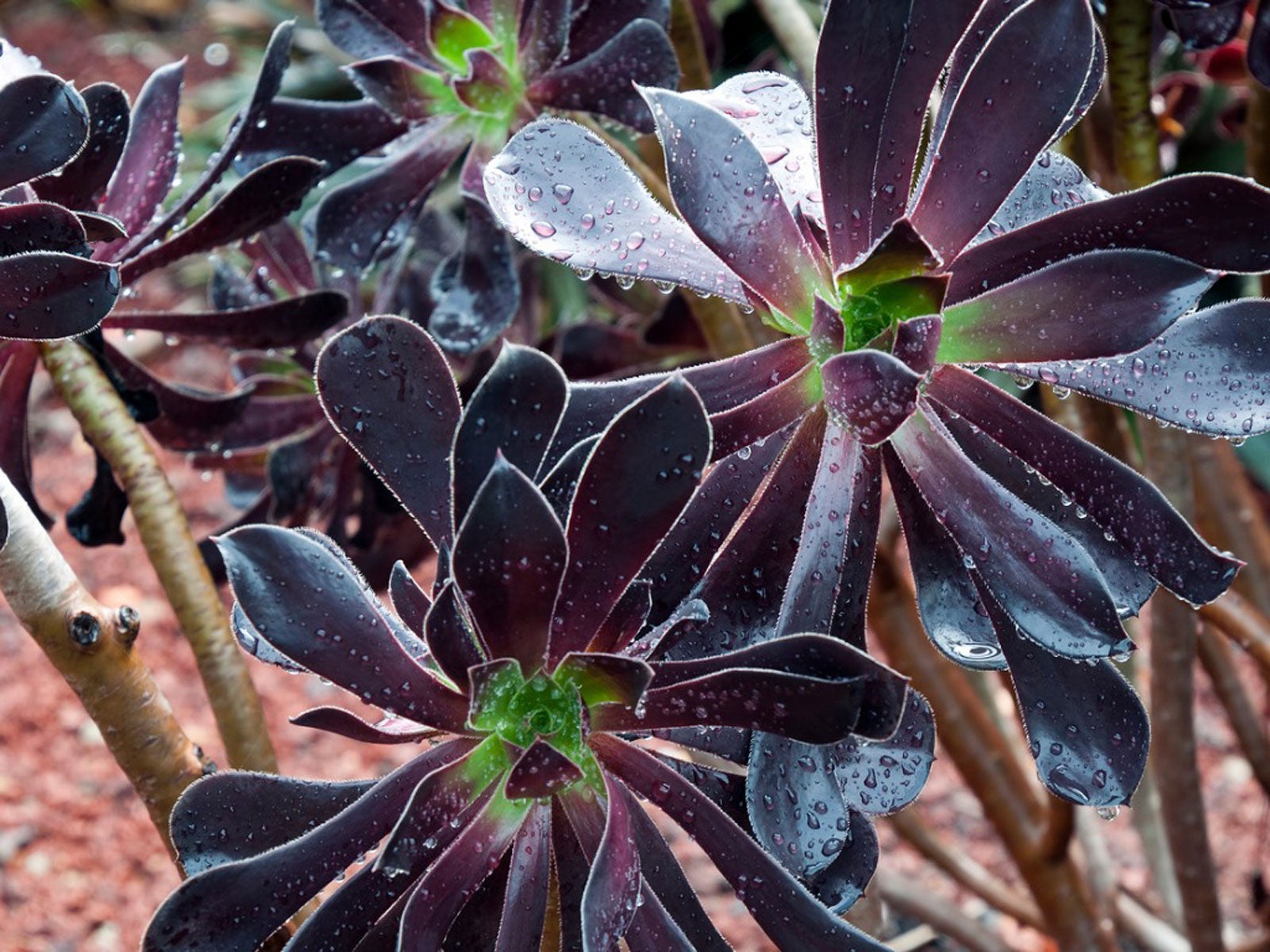Black Succulent Plants – Learn About Black Colored Succulents


As you plan ahead for your upcoming Halloween displays, remember to include the latest popular addition, black succulent plants. It’s never too early to get them lined up and encourage them to turn their darkest shade. These stand out among pumpkins, gourds, and multi-colored ears of corn.
Black Succulent Varieties
Keep in mind that black colored succulents are not really black, but a deep purple that can appear black in some lighting situations. Getting them to their darkest shade may require adjusting their lighting, water, and sometimes their temperature conditions. This is sometimes called stress. It's acceptable to stress out your succulents to a point.
Aeonium arboreum 'Zwartkop' - Commonly called Black Rose aeonium, this dark leaved plant is beautiful in the outdoor planting bed or container. Most often they should be brought in for winter in places where temperatures drop low enough to frost and freeze.
Echeveria ‘Black Prince’ and ‘Black Knight’ - Echeveria ‘Black Prince’ and ‘Black Knight’ need direct sunshine to develop the darkest shades of purple or deep burgundy that make them appear almost black. Cooler temperatures also contribute in many areas, right before Halloween is the most appropriate time for reaching this desired shade. Cold weather stress is sometimes what you need to get a black leaf succulent to its darkest shade. Start in spring, when possible.
Sinocrassula yunnanensis - Maybe not as familiar, but even darker than the succulents mentioned above, ‘Chinese Jade’ grows with leaves that appear black. The velvety leaves are half rounded and pointed at the top, growing in dense rosettes. A few of these small succulents make an interesting contrast among colorful gourds, pumpkins, and even mums in fall.
These plants originate in Burma (Myanmar) and other parts of Asia and China. Often labeled as a rare, Korean succulent, expect to order it online. As with the others above, get it started early to get the darkest shade by Halloween. This plant is monocarpic, meaning it dies after blooming. Fortunately, it takes several years for the starry white blooms to appear.
Tips for Stressing Black Succulents
If you have a young specimen that has not yet been exposed to full sun, starting them in spring allows plenty of time to get it acclimated before summer’s heat. Try to avoid direct sunlight in afternoons during the hottest days, as leaves might sunburn. You’ll have plenty of time to readjust before the autumn holiday arrives.
Sign up for the Gardening Know How newsletter today and receive a free copy of our e-book "How to Grow Delicious Tomatoes".
Don’t provide more water than necessary when growing any colorful succulent. Regular watering encourages black succulent varieties to return to green. Of course, you will continue to water, especially when growing succulents outside in the heat, just try to get by with as little as possible. When temperatures begin to cool, decrease watering.

Becca Badgett was a regular contributor to Gardening Know How for ten years. Co-author of the book How to Grow an EMERGENCY Garden, Becca specializes in succulent and cactus gardening.